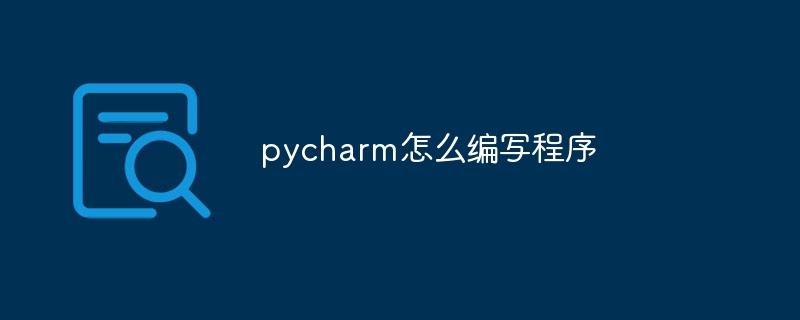Home >Backend Development >Python Tutorial >How to write programs in pycharm
How to write programs in pycharm
- 下次还敢Original
- 2024-04-18 03:54:14885browse
How to write a program in PyCharm? Install PyCharm. Create new project. Write code. Run the program. Debugger. Use shortcut keys. Manage projects.

How to write programs in PyCharm
Step 1: Install PyCharm
- Visit the PyCharm official website to download and install the Python IDE.
Step 2: Create a new project
- Open PyCharm, click "File" > "New Project" to create a new project.
- Select the project language as Python.
- Enter the project name and save location.
Step 3: Write code
- Open the "main.py" file in the project directory.
- Write code using Python keywords and syntax.
- save Changes.
Step 4: Run the program
- Click the green run button (or press F5) to run the program.
- The output will be displayed in the bottom console of PyCharm.
Step 5: Debugging the program
- Set a breakpoint in the code (click the empty space to the left of the line number).
- Click the debug button (or press F9) to start debugging.
- Use the debugger to inspect variable values and step through code.
Step 6: Use shortcut keys
- PyCharm provides a wealth of shortcut keys to improve writing efficiency.
- For example, Ctrl S saves the file, F2 renames the variable.
Step 7: Manage Projects
- PyCharm allows you to manage projects, such as:
- Add a virtual environment
- Install and update packages
- Use the integrated terminal
Tips:
- Take full advantage of PyCharm’s code completion and error checking functionality.
- Refer to the PyCharm documentation and tutorials for more details.
- Find help through forums and communities.
The above is the detailed content of How to write programs in pycharm. For more information, please follow other related articles on the PHP Chinese website!
Statement:
The content of this article is voluntarily contributed by netizens, and the copyright belongs to the original author. This site does not assume corresponding legal responsibility. If you find any content suspected of plagiarism or infringement, please contact admin@php.cn
Previous article:How to view program running steps in pycharmNext article:How to view program running steps in pycharm

